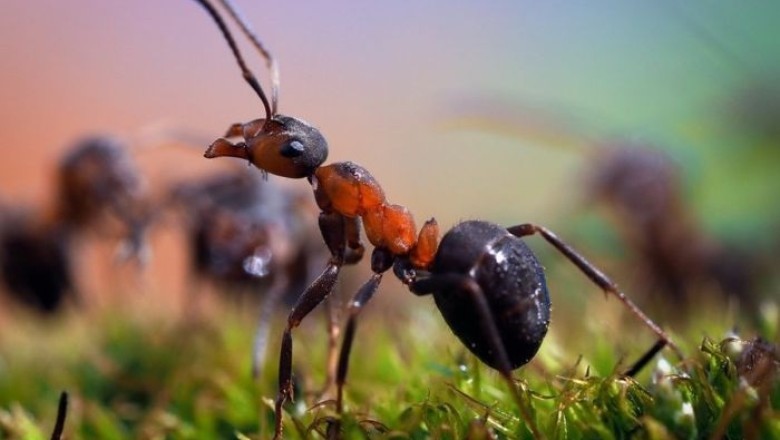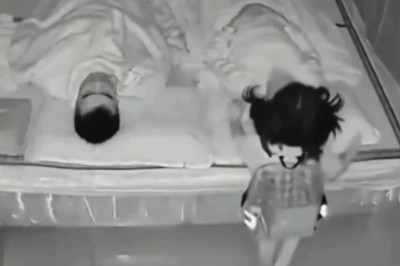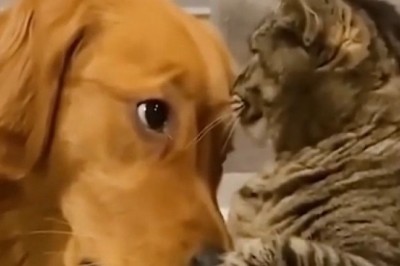Ant Navigation Mechanisms
If an ant finds itself far from the anthill, it must rely on its own navigation mechanisms to find its way back. These navigation mechanisms can vary significantly among the approximately 15,000 ant species. Most ants have a limited range of action for their navigation mechanisms, typically only spanning tens or hundreds of meters. Once beyond this distance, the ant may become completely disoriented, similar to a lost child in a foreign city.

One common navigation method for ants is following scent trails marked with trail pheromones. Ants secrete these pheromones from glands on their abdomen, marking paths as they travel. When an ant encounters one of these pheromone trails, it can follow it back to the nest. The Swiss naturalist Charles Bonnet first observed this navigation mechanism in the 18th century by running his finger along an ant path and watching the ants avoid crossing it.
Ants with poor vision, such as the South American Eciton ant, heavily rely on trail pheromones for navigation. These ants live nomadically, forming large columns and temporary bivouacs as they search for prey in tropical forests. Unlike visually guided ants that can recognize landmarks like the shapes of trees, visually impaired ants like Ecitons depend solely on touch and pheromone communication to stay connected during their raids.
In experiments with visually guided ants, researchers have shown that ants use general outline shapes of visual cues to find their way home. For example, Australian desert ants were able to navigate by recognizing the outline of a black plastic wall resembling familiar bush shapes, irrespective of the wall's orientation relative to cardinal directions.
However, when the visual landscape changes significantly, ants may struggle to navigate back home. In an experiment with Myrmecia pyriformis ants in Australia, altering the outlines of trees near their path led to the ants becoming disoriented and taking longer, meandering routes to their hunting grounds. It took them three days to adjust to the changed landscape, highlighting the challenge ants face when placed in unfamiliar environments far from their nest.
Ant Navigation and Social Behavior
Some ants use not only their immediate surroundings but also the sky to choose the right direction. This was demonstrated in 1911 by Swiss entomologist Felix Santschi, who conducted experiments with ants in North Africa. Santschi obstructed the sun from the ants while simultaneously reflecting its image in a mirror. This simple manipulation resulted in the ants getting disoriented and moving in the opposite direction upon returning to the nest.
Although the mirror experiment affected some ant species, others are more resilient due to their ability to sense polarized sunlight in addition to the sun's position. Partially polarized light, resulting from atmospheric transmission, allows ants to determine the sun's location even when obstructed by clouds or experimenters.
Desert ants rely heavily on the sun and polarized light for navigation as they inhabit featureless terrains with few landmarks. Despite this, ants still require additional information to pinpoint their nest's location accurately. Desert runner ants of the Cataglyphis genus are exemplary navigators, known for their swift solo hunts for insects in the scorching sands. These ants operate without leaving pheromone trails, using a navigation method called dead reckoning to return to the nest after venturing up to 150 meters away. However, even these adept navigators struggle to find their way from unfamiliar starting points.
Sadly, a lost ant that strays far from the anthill by unconventional means like leaf carriage, boat, or car will likely never return home, even if it gazes at the sky. Despite this, there is a silver lining as the lost ant's suffering is short-lived. Social insects like ants do not fare well when separated from their colony, typically perishing within days even with suitable food.
Isolated ants exhibit restlessness, excessive movement, and digestive issues compared to their group-bound counterparts. The absence of social interactions like trophallaxis, where ants share food by regurgitation, disrupts their digestive processes, leading to digestive disturbances.
Interestingly, ants severed from their nest alongside siblings fare better than being completely alone. For example, a solitary carpenter ant may survive six days, while in a group of ten, its lifespan extends to 66 days, highlighting the significant impact of social bonding on an ant's longevity.






















Comments
0 comment